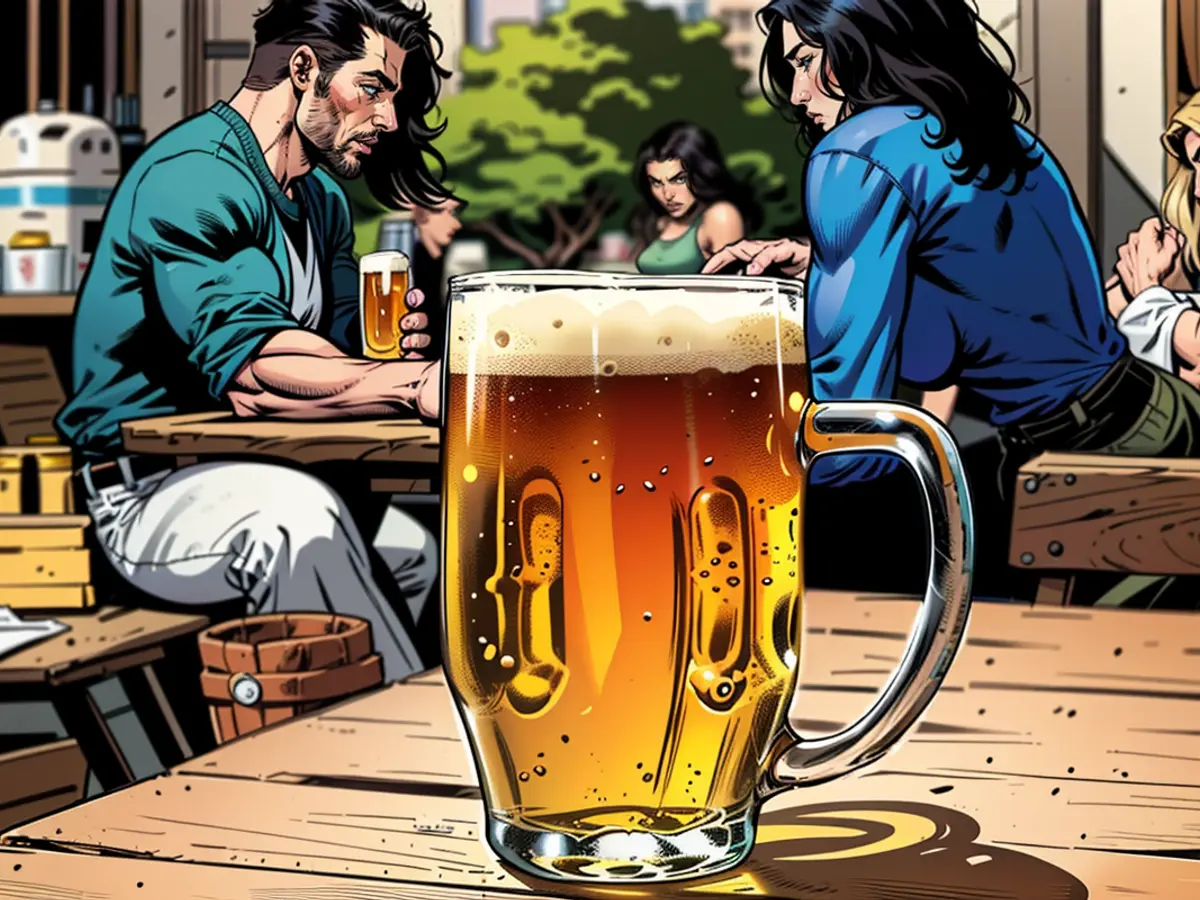The present status in Germany currently stands.
Expectations of Germany often involve mentions of beer, sausages, football, and large cars. A look at the facts reveals the true picture in these areas.
For many, Germany conjures images of beer, bratwurst, Bundesliga, and cruising in big cars. A trip to a pub is even considered a quintessential German experience. However, statistics paint a different picture. The clichés surrounding Germany may not be as unchanging as one might think, with some shifts and surprises in store.
Drinking beer
Although German poet August Heinrich Hoffmann von Fallersleben did not mention beer in "Das Lied der Deutschen" - the source of the German national anthem, opting instead for wine - beer is often the first thought that comes to mind when the word "Germany" is used. This is especially true when considering the famous Oktoberfest in Munich. The German Brewers' Association proudly proclaims that brewing is a German tradition.
However, consumption trends are shifting. Over the past 25 years, the average person in Germany has consumed about 30% less beer, with per capita consumption dropping to only 88 liters in 2019 (down from 99 liters five years prior). This trend seems to be accelerating. Here's to less and less beer, Germany?
Eating sausage
BBQing bratwurst in summer, indulging in Bockwurst on Christmas Eve, ordering currywurst in the canteen - there are few things more German than sausage. From Thuringian Rostbratwurst to Nuremberg Rostbratwurst, sausages have long been a staple of German cuisine. Foreign tourists often make a point of trying local sausage specialties during their visit.
But the German Association of Sausage and Ham Producers has some worrying news: per capita consumption of meat products, including sausage and ham, has decreased significantly in the last decade. Ten years ago, the average person consumed almost 30 kilograms of meat, but that figure has dropped to around 25 kilograms per year. Overall meat consumption is also down by around 10 kilograms per person compared to 2014.
Visiting a pub
As German musician Michael Kunze wrote for Peter Alexander some 50 years ago, cold beers and warm conversations in neighborhood pubs are where life feels most meaningful. Unfortunately, these institutions are becoming increasingly rare.
Since 2015, Germany has seen a steady decline in the number of pubs, with only about 21,000 left in 2022 compared to 31,000 in 2015. Of course, the COVID-19 pandemic played a significant role in this decline. But the rising costs of energy, rent, and labor are also likely contributors.
Driving a car
Germany is known for its passion for cars, but the tide is turning. Public transportation, car-sharing, and even electric vehicles are becoming more popular. Since 2010, the number of cars per 1,000 inhabitants has been steadily decreasing. In 2020, there were 548 cars for every 1,000 people, a significant drop from 615 in 2010.
The VDA, Association of the German Automotive Industry, is optimistic about the future of electric vehicles, aiming for "climate-neutral mobility by 2050." While environmentalists might think that Germany is moving away from cars and individual traffic, this is not entirely accurate. In fact, the number of registered passenger cars has continued to grow, with about 49 million cars in 2020 (up from 44 million in 2010).
Attending a stadium
The Bundesliga is a major draw for football fans, but attendance is on the decline. While 13.3 million spectators attended Bundesliga games in the 2018/19 season, that number has dropped to only 11.9 million by the 2023/24 season. The decline in stadium attendance is likely due to the increasing availability of entertainment options, with more people opting for alternative forms of leisure.
However, theater visits are a different story. As a result of Germany's federal structure, it has a rich and diverse theater landscape, with more people attending theaters in Germany than Bundesliga stadiums every year.
In summary, while Germany is still famous for its beer, sausages, football, and large cars, the facts paint a more nuanced picture. Consumption trends are shifting, and the German love for pubs, beer, sausage, and cars is not what it was in the past. The future of German culture is undoubtedly one of change and adaptation.
Sure thing, let's dive into it. You know, there's a flip side too. Before the Corona times (2018/19 theater season), around 22.9 million theater-goers were noted. But lately, there's been a 19% drop. The freshest numbers from the German Stage Association (2022/23, being the first "regular" theater season after three seasons of Corona shutdowns) reveal an audience of just 18.6 million.
Although Germany is known for its large cars, the number of cars per 1000 people has decreased since 2010. In 2020, there were 548 cars for every 1000 people, a significant drop from 615 in 2010. However, the number of registered passenger cars has continued to grow, reaching about 49 million cars in 2020.
Despite the decline in stadium attendance for Bundesliga games, Germany's love for football remains robust. This is evident in the strong theater attendance, with more people attending theaters in Germany every year than Bundesliga stadiums. The future of German culture may see shifts in consumption trends, but the passion for football and theater seems to be enduring.






